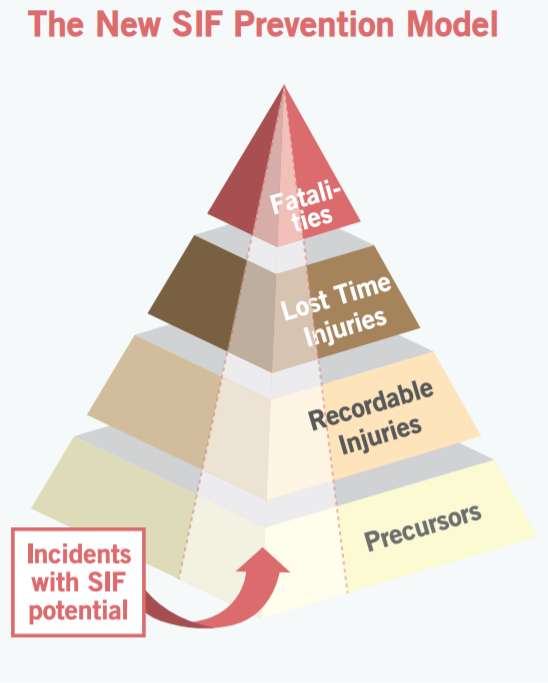This week’s Safetip is about classifying near misses on their potential for serious injury and fatality, in order to focus on them first.
Not All Near Misses Are the Same
Safety professionals are familiar with Heinrich’s safety triangle. According to the model, for every major injury or fatality, there are 29 minor injuries and 300 non-injury incidents. Heinrich’s safety triangle is a fundamental concept in occupational safety and health.
But it’s good sometimes to re-visit or question theories, even if they have been around for a long time and are taken for granted by many. A white paper from the Campbell Institute does exactly that.
The white paper explains that there is a flaw in Heinrich’s safety triangle because not all non-injury incidents are equal in terms of their potential for resulting in serious injury and fatality (SIF). Only some near misses have the precursors that could lead to recordable injuries, lost time injuries, and fatalities.
The white paper proposes a revised design of the safety triangle for SIF prevention where incidents with SIF potential are represented as a slice of the original safety triangle. This subset of incidents with SIF potential is different than those outside of it. They have different root causes and contextual factors leading up to them. Here’s the revised triangle:
Focus on Near Misses with SIF potential
Since not all near misses are the same, it’s essential to focus on the ones with SIF potential. The first step consists of classifying near misses on their SIF potential.
There is no official definition of what constitutes a near miss with SIF potential, but according to the Campbell Institute’s research paper, a commonly used criterion is that an event has SIF potential if the situation could’ve been worse and could’ve resulted in SIF if not for one single factor. This factor could be:
- A control that was in place
- The location of a person or piece of equipment
- The time of day
- Weather conditions
Another similar approach is to ask this question: “Could the near miss have resulted in a SIF if not for certain barriers or countermeasures, or if one factor around the event had been changed?”
Treating all near misses as if they have the potential to result in SIF can divert attention away from those that have the most potential to result in something serious. Focus first on near misses that are truly with SIF potential. In fact, the collection and analysis of data around near misses with SIF potential (i.e. not just data on all near misses without distinction) can be a key leading indicator to track.
Each week we publish a Safetip where we share a safety tip or best practice that contributes to safety excellence. Visit Enablon Insights again next Wednesday for a new Safetip!View the recording of our webinar with TapRooT® to learn how you can enable a human factors-based incident investigation lifecycle, and how the integration of Enablon and TapRooT® facilitates the tasks of incident investigators:






